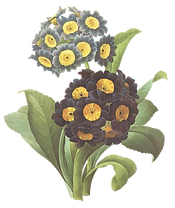On Dairy Goats
- laurengoff
- Jun 21, 2016
- 2 min read
Something I don't see a lot of in supermarkets, but that I am curious to try, is goat dairy products. As it turns out, we are going to keeping a neighbor's goats sometime this summer in the old turkey pen, so there's a good chance I could get to try some!

This is Goat Ice Cream (Source)
Which reminds me -- let's learn a little bit about dairy goats. Depending on your location, the breed of the goat, and whether or not your goat can compete in a show, purchasing one can cost anything from $75-500.
Goats are relatively cheap and profitable -- two healthy does (female goats) will produce enough milk to feed a family for a year, each doe averaging 3 quarts a day for 10 months.

Milking a Goat (Source No Longer Available, Though the Picture Lingers On)
Goats in general are also not particular about what they eat and forage effectively. This is why most of the world (64%) relies on goats for milk instead of cattle -- a goat will eat most anything, though you shouldn't feed it everything. Alfalfa hay costs $9-12 dollars per bale. Grain is priced at 9 dollars per bag of 50 pounds.

Alfalfa Hay Field (Source)
A lot has been said in the more food/environmentally-conscious circles about the massive use of land for livestock, and with goats' ability to adapt well to varied grazing environments, it seems that they would be the more "environmental" choice for dairy livestock.
Goat milk is widely regarded as more healthy than cow's milk. This goat farm tells me that goat milk is less likely to cause an allergic reaction, takes more time to separate, is easier to digest, is less likely to trigger a lactose intolerance reaction, and does not create an acidic reaction when digested like cow's milk.

Infographic (Source)
They are biased, but I'm sure they know more about goats than I.
There are more than 200 goat breeds worldwide, but six breeds are the most popular dairy goats on the market: Alpines, Oberhaslis, Saanens, Toggenburgs, LaManchas and Nubians. While all breeds generally do well in most of the U.S, the first four breeds listed are well-suited to cooler climates since they were bred in mountainous regions of Switzerland.

Top U.S. Dairy Goat Breeds (Source)
LaManchas and Nubians were originally bred in tropical and desert climates where it's warmer, so they tolerate hot summer conditions better than the Swiss breeds.
Of course, however, the best thing about goats is their cuteness, and their high intelligence!

Goat Antics (Source)











Comments